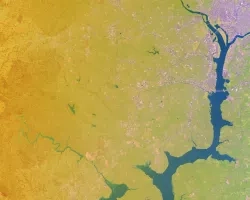
The diverse landscapes of Bhutan host a rich biodiversity of animal and plant species. Asian elephants (Elephas maximus) are a flagship keystone wildlife species whose conservation is essential for the functioning of Bhutan’s forest ecosystems. Despite this, increasing habitat loss and human-elephant conflict continue to be detrimental to the survival of Asian elephants. The lack of information on Bhutan’s elephants and land use and land cover (LULC) trends present major challenges for Bhutan in modeling locations with suitable habitat and biological corridors for elephants. The DEVELOP team at NASA Goddard Space Flight Center partnered with the Bhutan Foundation, Bhutan Tiger Center, and Bhutan Ecological Society to help address this problem. The team mapped LULC in Bhutan for 2010 and 2015 by utilizing NASA Earth observations, including Landsat 5 Thematic Mapper (TM) and Landsat 8 Operational Land Imager (OLI) to acquire information on historical LULC patterns and view apparent land cover change. The team used the Linkage Pathways Tool of the Linkage Mapper Toolbox in ArcMap to derive biological corridor maps from habitat suitability model outputs of the previous term and known locations of protected areas in Bhutan. The corridor maps were used to view and assess corridor suitability and connectivity between protected parks. Project results are being provided to partners to help make informed decisions on the placement and conservation of elephant movement corridors.



